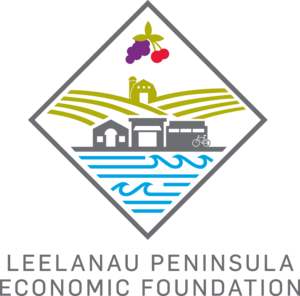mission
The mission is to develop a county-wide plan for the expansion and implementation of high-speed broadband services to all residents, farms, and businesses currently not served by broadband access.
origin
In 2016, the Leelanau Peninsula Economic Foundation (LPEF) conducted a survey of Leelanau businesses and found that one of the critical barriers to business success and growth was lack of available high-speed internet service.
Based on these findings, LPEF established the Leelanau Internet Futures Team (LIFT), comprised of private and public sector members, who was tasked with examining the status of broadband services and developing an action plan to provide broadband access throughout the county.
LIFT partnered with Connect Michigan and conducted multiple surveys of residents, businesses, and stakeholders to identify needs and priorities. (Resource: Community Technology Action Plan, 2017)
action
By 2021, it was clear the reliance on internet for businesses, schools, and residences had increased dramatically, magnifying the inadequacies in some areas of our region. LIFT recommended the Leelanau County Board of Commissioners (BOC) engage DCS Technology Design, a telecommunications engineering firm based in Michigan focused specifically on rural broadband issues from an infrastructure viewpoint, conduct a county-wide asset survey and study of all broadband services, cabled and wireless, parcel by parcel by driving all roads to determine internet capabilities. (Resource: Rural Broadband Inventory Report)
findings
Findings as a result of the county-wide asset survey and study performed by DSC Technology Design showed:
Leelanau County has ~22,700 occupied parcels
5,045 (22%) parcels are without access to cable or fiber, with little to no access of other high-speed broadband services (See map for underserved parcels.)
At the direction of the BOC, DCS Technology Design began working with LIFT to develop a high-level broadband plan that includes the following long and short-term goals. (Resource: Rural Broadband Planning Overview & Recommendations)
goals
short term
Achieve a minimum of 35 Mb/s download and 5 Mb/s upload data rates (35/5) to all un-served homes, farms, and businesses by December 31, 2022, employing the following strategies:
Leverage new-generation wireless technologies that can be deployed quickly to larger geographic areas.
Identify planned fiber (RDOF) areas that may be accelerated to fill gaps not serviceable in other ways.
Leverage existing and planned fiber and cable coverage areas to fill in the small gaps.
Identify the small gaps that may be serviceable through extensions of existing Broadband Hybrid Fiber/Coax networks (HFC).
Explore new tower locations and incent existing and new wireless providers to improve internet coverage while improving enhanced 911 Emergency service coverage.
Develop public service announcement methods to keep the community informed.
Provide layered maps online to allow the public to examine unserved areas and overlay existing and new broadband services that is or will be available in their area.
short term and long term
Contract with Point Broadband, working with Cherryland Electric Cooperative, to expand fiber to the home (FTTH) to nine townships over the next two years covering 3,100 unserved homes and businesses (60% of the total unserved in the County).
This proposal is a $17.4 million dollar investment ($12.4 million by Point Broadband, $5 million by the County). This map shows the Point Broadband proposed fiber line in blue.
Explore collaboration opportunities with Grand Traverse Band of Ottawa and Chippewa Indians to utilize their backbone fiber.
Work with other fiber Internet Service Providers (ISPs) - Charter and Cherry Capital Connection - to complete FTTH in area of the remaining four townships (Empire, Kasson, Glen Arbor, and Cleveland) not fully served by Point Broadband.
Achieve FTTH or HFC connectivity capable of 1 Gigabit by 1 Gigabit symmetrical data rates by 2026.
Acknowledge emerging broadband speed goals (100/100) for future funding and strive to position the county to achieve 100% of those goals by 2026.
Allocate $3.2 million of American Rescue Plan Act (ARPA) funds awarded to the county and raise additional necessary funds to complete the broadband recommendations.
Click here for the full Executive Summary of the Overview & Recommendations.
additional resources
Community Technology Action Plan - April, 2017
Broadband Presentation by LIFT to Community Organizations (Descriptive of types of internet service) - September, 2021
Rural Broadband Inventory Survey, prepared by DCS Technology Design - September, 2021
Rural Broadband Planning Overview & Recommendations, prepared by LIFT and DCS Technology Design - January, 2022
Executive Summary of the Overview & Recommendations, prepared by LIFT, January, 2022


